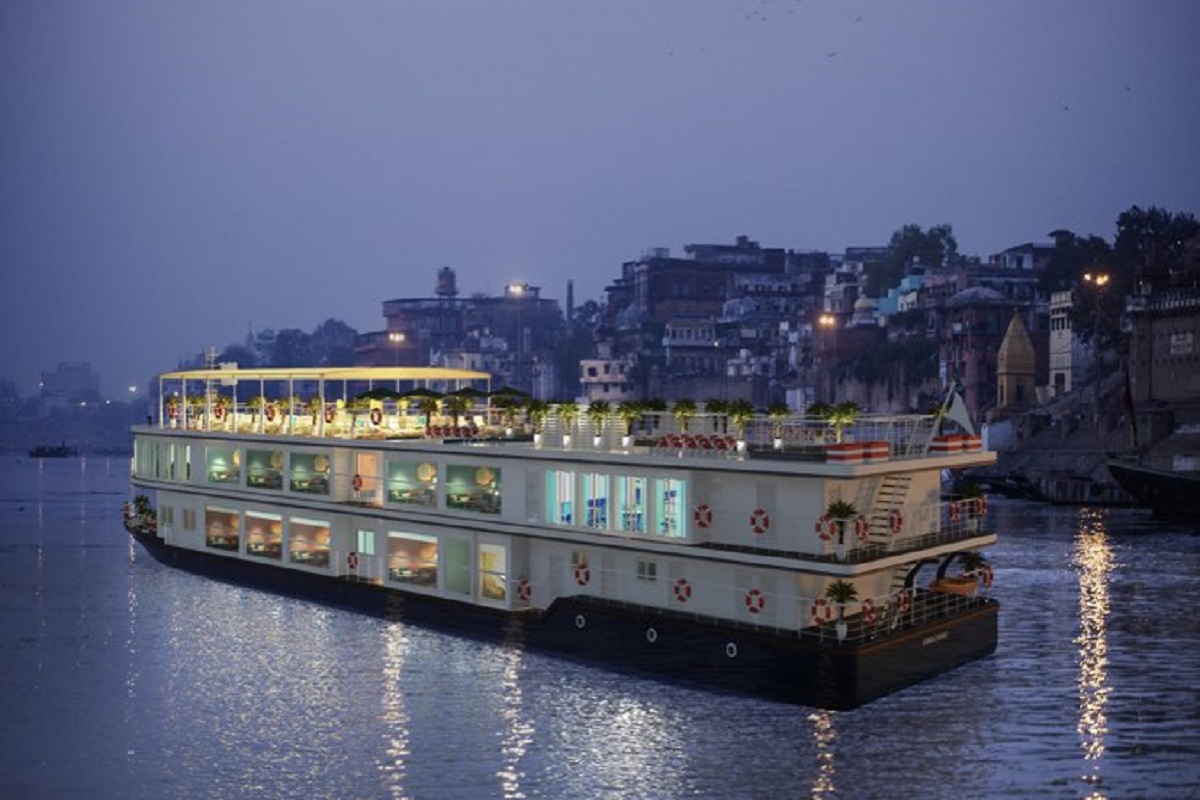Modi govt placed special emphasis on developing entire ecosystem of tourism in country
The Union government is also planning to launch a well-defined and consistent cruise tourism policy in line with international standards and practices.
The efforts of the Government of India to develop the country’s waterways to transport goods and people are showing signs of coming to fruition. The announcement last week that the world’s longest luxury river cruise from Varanasi to Assam via Bangladesh will start in January 2023 is an example.

[Photo: Twitter@theupindex]
The efforts of the Government of India to develop the country’s waterways to transport goods and people are showing signs of coming to fruition. The announcement last week that the world’s longest luxury river cruise from Varanasi to Assam via Bangladesh will start in January 2023 is an example.
The 50-day cruise will start in Varanasi and reach Patna on the 8th day passing through Buxar, Ramnagar, and Ghazipur. It will cover almost 1,100 km in Bangladesh before re-entering India and ending in Dibrugarh, Assam.
According to media reports, the leisure journey will cover approximately 4,000 kilometres and stop at Kolkata and Dhaka too. The cruise will cover 27 river systems and over 50 tourist destinations including World Heritage Sites, which will put India and Bangladesh on the river cruise map of the world, according to Union Minister for Shipping and Waterways Sarbananda Sonowal.
Advertisement
The fact that the Varanasi-Dibrugarh cruise is to be run on a public-private partnership (PPP) model is significant, as is the proposed amendment to the Indian Vessels Act which allows cruise lines to obtain a national permit to move seamlessly on waterways across states.
Expectations from stakeholders are high, especially as the Centre has already designated a long stretch of the Brahmaputra from Sadiya in Upper Assam to Dhubri (where the river leaves India and flows into Bangladesh) as National Waterway 2. New Delhi and Dhaka have inked a deal under which the latter will allow vessels to transit through four river routes within Bangladesh. Cargo vessels have started sailing down the Ganga from Prayagraj to Haldia on National Waterway 1, and then on to the rivers of Bangladesh from where they enter Assam.
The Varanasi-Dibrugarh cruise is the first sign that Indian waterways are graduating from transporting goods to carrying people as part of a commercially viable tourism push which, when expanded to other routes, could generate significant employment opportunities. If ongoing attempts to get another riverine nation, Myanmar, as well as land-locked Bhutan, to team up with India and Bangladesh to develop a waterways network to serve the region are successful, it would unlock massive development potential.
The over 8,400 kilometres of navigable waterways in Bangladesh could also be utilized for the transportation and distribution of goods between Bangladesh, India, Nepal, and Bhutan which would anchor business relationships between the South Asian neighbours and provide a base for them to expand trade into Southeast Asia.
Advertisement